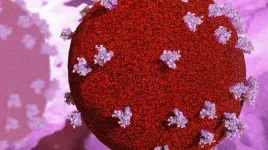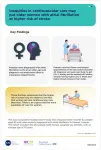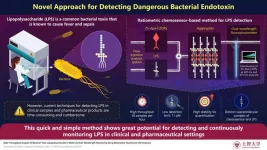An existing blood cancer drug has shown promise in killing ‘silent’ HIV cells and delaying reinfections – a significant pre-clinical discovery that could lead to a future cure for the disease.
Hidden HIV cells, known as latent infection, are responsible for the virus permanently remaining in the body and cannot be treated by current therapy options. These hibernating, infected cells are the reason why people living with HIV require life-long treatment to suppress the virus.
Led by WEHI and The Peter Doherty Institute for Infection and Immunity (Doherty Institute) -- leading medical research institutes in Melbourne, Australia -- the landmark study is being translated into a new clinical trial to assess whether the blood cancer treatment can be repurposed to offer a pathway towards an HIV cure.
Watch and embed the video: https://youtu.be/o7fjKzW4cvM
At a glance
A joint WEHI and Doherty Institute study finds the cancer drug venetoclax – based on a groundbreaking research discovery at WEHI – can kill hibernating HIV-infected cells and, crucially, delay the virus from re-emerging.
While current treatments can suppress the virus, they cannot target hibernating HIV-infected cells and permanently prevent the virus from coming back.
A clinical trial based on the findings will launch in Denmark and Australia, to test whether venetoclax can be used as a potential pathway to develop a cure for HIV.
An estimated 39 million people worldwide are living with HIV, including more than 29,400 Australians.
Antiretroviral therapy (ART) is the standard of care treatment given to people living with HIV and is highly effective. But the medication cannot target hibernating HIV-infected cells, meaning it can only suppress the virus – not cure it.
ART for people living with HIV is life-long: if a person stops taking this medication, hibernating HIV-infected cells will reactivate within a very short timeframe, leading to a resurgence of the virus.
An estimated 98% of Australians living with HIV currently have undetectable levels of the virus, as it is completely suppressed by their ongoing ART treatment.
In the new study, WEHI researchers used the cancer drug venetoclax on enhanced pre-clinical models of HIV and found it delayed the virus from rebounding by two weeks, even without ART.
Co-first author, Dr Philip Arandjelovic from WEHI, said the discovery is an exciting step towards developing treatment options for the tens of millions of people currently living with HIV globally.
“In attacking dormant HIV cells and delaying viral rebound, venetoclax has shown promise beyond that of currently approved treatments,” he said.
“Every achievement in delaying this virus from returning brings us closer to preventing the disease from re-emerging in people living with HIV. Our findings are hopefully a step towards this goal.”
The study marks the first time venetoclax has been used on its own to assess HIV persistence in pre-clinical models.
However, researchers also found the cancer treatment can be combined with another drug that acts on the same pathway and is currently in clinical trials, to achieve a longer delay in viral rebound, with a shorter duration of venetoclax treatment.
“It has long been understood that one drug may not be enough to completely eliminate HIV. This finding has supported that theory, while uncovering venetoclax’s powerful potential as a weapon against HIV,” Dr Arandjelovic said.
Lifelong memory game
HIV primarily targets CD4+ T cells, a type of white blood cell crucial for the immune system to properly function.
It is within these cells that HIV can lie dormant, ready to reactivate if the virus is not effectively eliminated.
Using human CD4+ T cells donated by people living with HIV who are on suppressive ART, scientists at the Doherty Institute found venetoclax was also able to reduce the amount of HIV DNA in these white blood cells.
Co-first author, The University of Melbourne’s Dr Youry Kim and a Postdoctoral researcher at the Doherty Institute, said venetoclax potently reduced the amount of intact viral DNA in patient cells when studied in the laboratory.
“This indicates that venetoclax is selectively killing the infected cells, which rely on key proteins to survive. Venetoclax has the ability to antagonise one of the key survival proteins,” said Dr Kim.
Milestone trial
Venetoclax, marketed as VENCLEXTA, is based on a landmark discovery by Professor David Vaux AO in 1988. The drug is the result of a research collaboration between WEHI and companies Roche, Genentech (a member of the Roche Group) and AbbVie. It was developed by Roche, Genentech and AbbVie and co-developed and trialled in Australia.
The Phase I/IIb clinical trial using venetoclax to treat HIV will start at the end of the year in Denmark, with plans to expand the study to Melbourne in 2024. It will be led by Professor Sharon Lewin (Director of the Doherty Institute), Professor Marc Pellegrini (Executive Director at the Centenary Institute) and Dr Thomas Rasmussen (clinician scientist at Denmark’s Aarhus University).
Prof Marc Pellegrini, a joint corresponding author and WEHI Honorary Fellow, said the trial will replicate the pre-clinical study conducted using WEHI’s state-of-the-art technology and facilities.
“The trial will assess the safety and tolerability of venetoclax in people living with HIV who are on suppressive antiretroviral therapy,” said Prof Pellegrini, a former Head of WEHI’s Infectious Diseases and Immune Defence Division.
Melbourne Laureate Professor Sharon Lewin, a joint corresponding author, concluded: “It’s exciting to see venetoclax, which has already helped thousands of blood cancer patients, now being repurposed as a treatment that could also help change the lives of people living with HIV and put an end to the requirement for life-long medication.”
The research was supported by the National Health and Medical Research Council (NHMRC), The Sylvia & Charles Viertel Senior Medical Research Fellowship, Australian Centre for HIV and Hepatitis Virology Research, the Victorian Government and Australian Government.
The study, “Venetoclax, alone and in combination with the BH3-mimetic S63845, depletes HIV-1 latently infected cells and delays rebound in humanized mice”, involves collaborations with the University of Melbourne and Royal Melbourne Hospital, and is published in Cell Reports Medicine.
END




